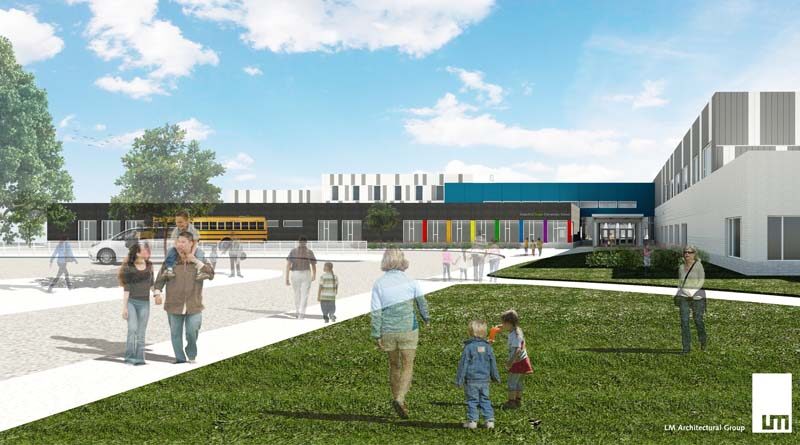Winnipeg PreK-8 School Targets Early 2021 Opening
By Lisa Kopochinski
WINNIPEG, Manitoba—With a completion date slated for early 2021, construction continues on the new Waterford Springs School, a $22.3 million PreK-8 facility in Winnipeg.
Despite the COVID-19 pandemic, Waterford School Principal Manuel Silva said, in a statement, that construction is going well.
“COVID-19 has presented us with some unexpected challenges, and that has resulted in a slightly later opening than originally planned.”
Classes, students, and teachers will be grouped together in host schools until they can all be moved together into Waterford Springs School in January.
“Once class lists are complete, we will notify parents where the classes will be held for their children. We are making every effort to keep the majority of students in the same host schools they have been in to date,” said Silva.
LM Architectural Group of Winnipeg is the architect on this impressive project and Bockstael Construction is the general contractor.
As part of a provincial mandate to promptly and efficiently deliver a number of new school facilities across the province, the 76,400 square-foot PreK-8 facility will provide new education, recreation and associated child care space to one of the fastest growing neighborhoods in the city.
Planned for an initial enrollment of 600—but designed to accommodate up to 800 students—the new school forms part of an overall redevelopment of a new neighborhood that will anchor a broader precinct community development in the area.
Oriented primarily east to west, the linear building is organized into two distinct blocks that are connected by a large, two-story Student Commons space that forms the heart of the school and defines the main entrance. The two-block concept has the added benefit of breaking down the perceived size of this large building surrounded by single family housing, while creating a series of courtyard and protected outdoor play and gathering spaces.
The one-story east block contains the major public and specialized education spaces, including the gym, multi-purpose room and library, while the two-story west block is organized around a courtyard and contains the administration suite, main classroom spaces and the daycare. This “U” shaped two-story configuration creates four distinct education houses that locates the daycare children and early years students on the main floor and the middle years students on the second floor.
Upon entering the building, the Commons opens up to the Outdoor Learning Classroom that was developed to raise awareness of Indigenous culture. This theme continues into the Commons itself, as well as other areas of the school. Working with the division’s Indigeneity consultant and a local indigenous artist and developed as a “Building as a Learning Tool” credit towards LEED silver certification. This indigeneity emphasis was an important priority for the school division in terms of raising awareness of the history, culture and contributions of First Nations people within what is largely a population of new or first-generation Canadians.
Silva, said that when it came to naming this school, the community was very involved in the final decision.
“The community went through many different names and different ideas. It was very strongly supported by the community that the name should reflect where it’s geographically located… so that when you hear ‘Waterford’, you can recognize that it’s in the Waterford area where Waterford Green and Castlebury Meadows are.”

